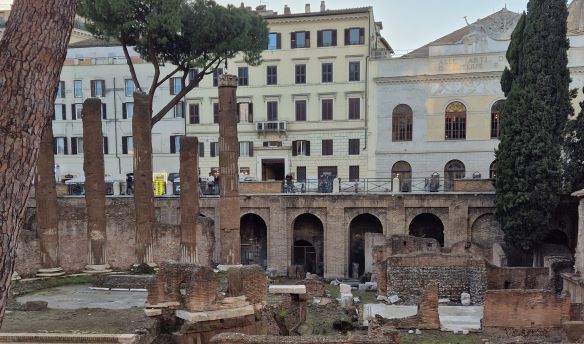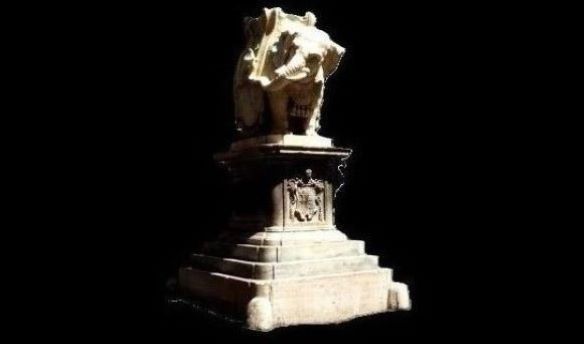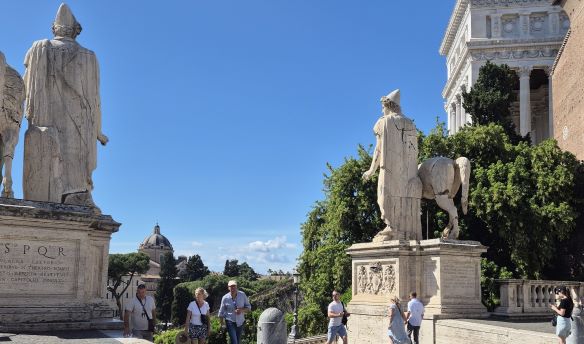
This guide, prepared by the US Morale Services Section, was intended for Allied soldiers arriving in Rome from June 1944. Most were first time visitors and the guide suggests itineraries.
This article will follow the first tour: “Ancient Rome, Circuit of the Four Avenues.”
The soldiers were provided with a detailed map of Rome and the guide gives map references for the streets and monuments.
Since then, some street names have changed but the layout has not and it remains an easy and picturesque route to follow.

“Ancient Rome, Circuit of the Four Avenues
… the heart of ancient Rome is now enclosed by four avenues, the Via dell’ Impero, the Via dei Trionfi, the Via del Circo Massimo and the Via del Mare. These wide and beautiful avenues are lined with gardens and adorned with statues of the emperors and other great men of Rome.”
The avenues remain, albeit with different names:
Via del Impero bisects the ancient forums of the Roman Emperors. It is now Via dei Fori Imperiali.
Via dei Trionfi is now Via di San Gregorio, connecting the Arch of Constantine to Circo Massimo.
Via del Circo Massimo has retained its name.
Via del Mare in central Rome is now Via del Teatro di Marcello, Via Petroselli and Via di Santa Maria in Cosmedin.
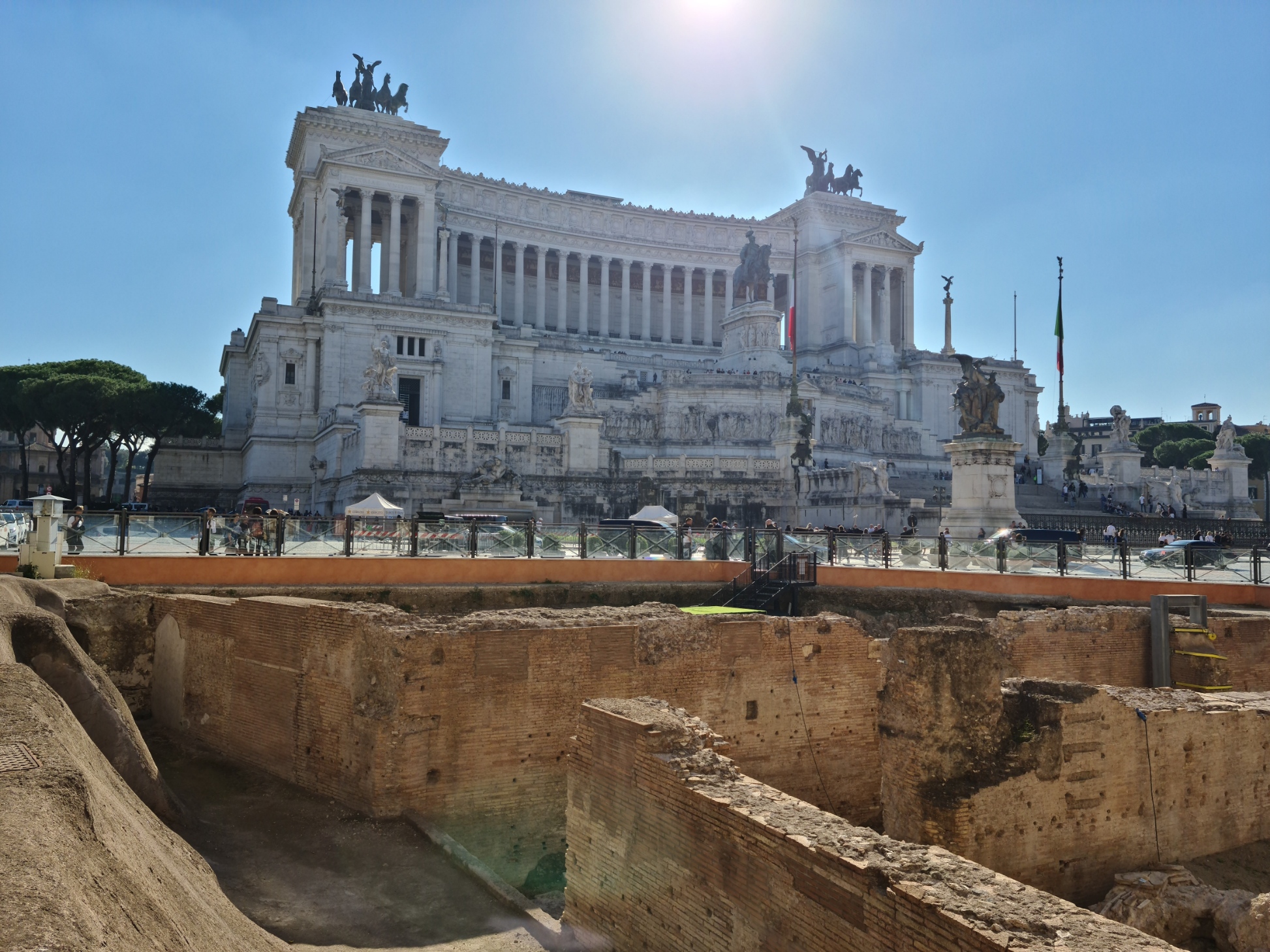
“A central spot at which to commence the tour is the Victor Emmanuel Monument …”
The Vittoriano stands at one side of Piazza Venezia. The Foro Triano behind (where the tour leads) is clearly visible. Today, there are further excavations across the road, in front of the monument.
The photograph above was taken in November 2022. Since then, work on the Linea C metro project has continued, uncovering in Piazza Venezia further remains of auditoria that date back to the Emperor Hadrian.
“West of the square is the Palazzo Venezia … which was returned to Italy from Austria … More recently it was used by Mussolini as his official residence.”
Palazzo Venezia was Mussolini’s office and official residence up until July 1943.
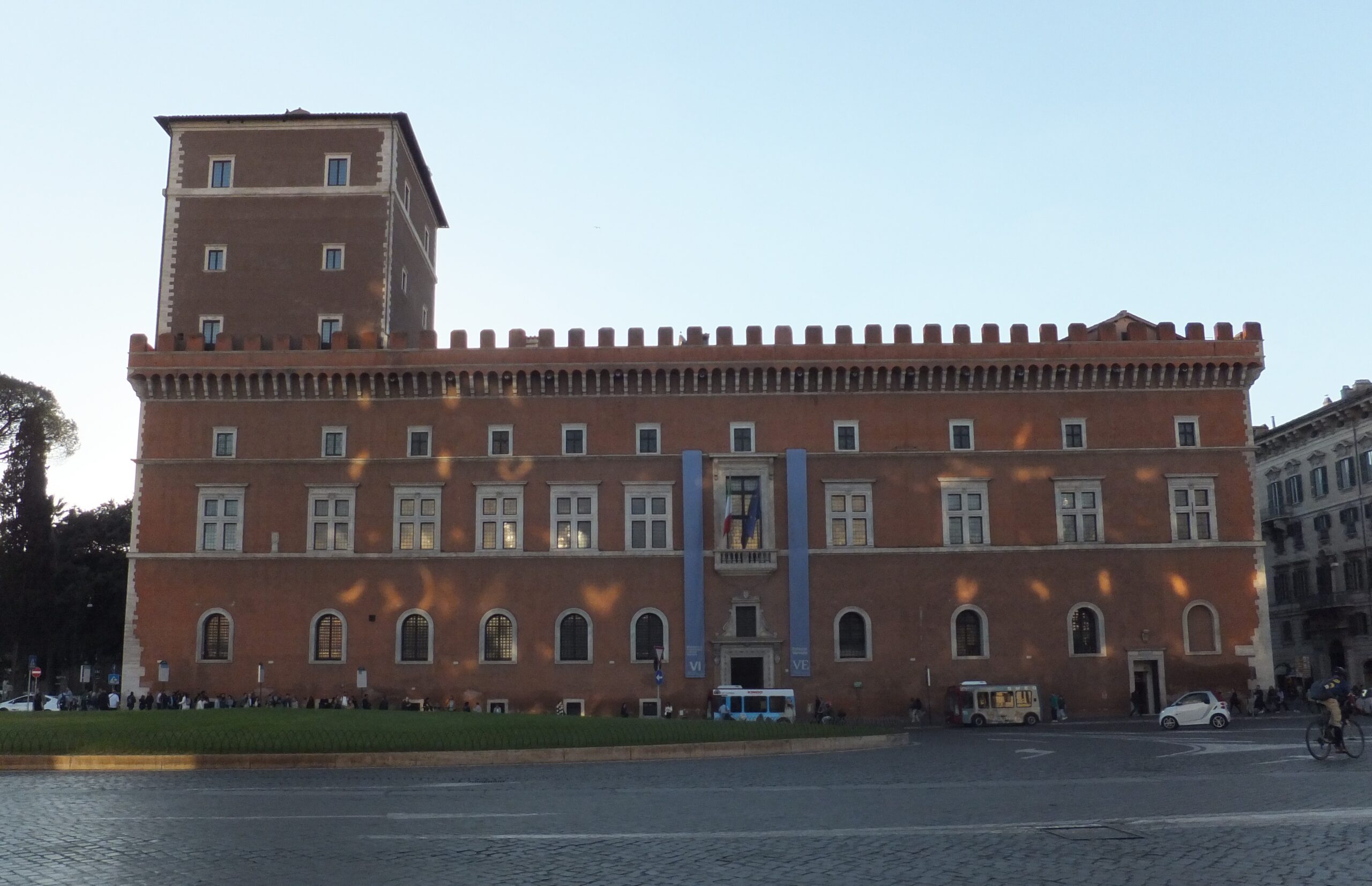
It is said that Mussolini kept the lights on in his office through the night, to convince Rome’s citizens that he was working tirelessly.
He used the balcony (on the first floor, in between the blue banners in the photo above) to address the crowds in Piazza Venezia.
He was dismissed from office by the King in July 1943. After Italy’s Armistice with the Allies in September 1943, the Germans installed Mussolini as puppet leader of an Italian fascist republic but he remained in northern Italy, even during the German occupation of Rome.
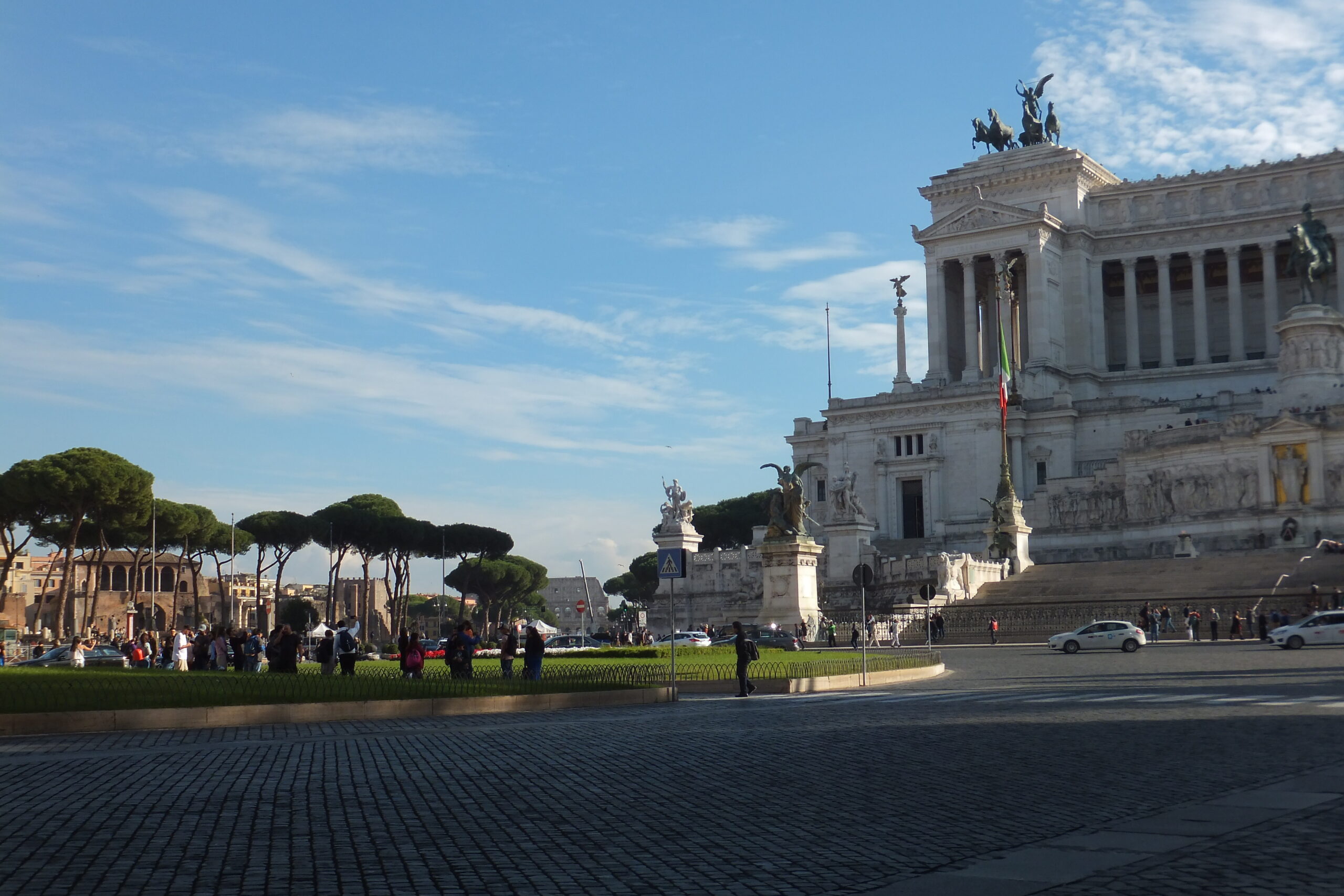
“East of the Monument’s base [the Vittoriano] …. is the Forum of Trajan”.
In the photo, the trees and ruins to the left of the Vittoriano mark the beginning of the Via dei Fori Imperiali, as it is now. The Forum of Trajan is the closest forum to the Vittoriano.
The Via dei Fori Imperiali bisects the forums of several Roman emperors (Trajan, Augustus, Nerva, Vespasian and Cesare), as well as the original Roman Forum.
The guide devotes a separate tour to the main forum but, in this itinerary, it explains:
“The earliest and most important forum of the ancient city – a forum was an open space used for the transaction of mercantile, judicial or political business – was the one which is called here the Roman Forum, or simply the Forum, but as it became more and more crowded several Roman Emperors sought to relieve the congested condition by constructing new ones in nearby areas and the Forum of Trajan was one of these.”
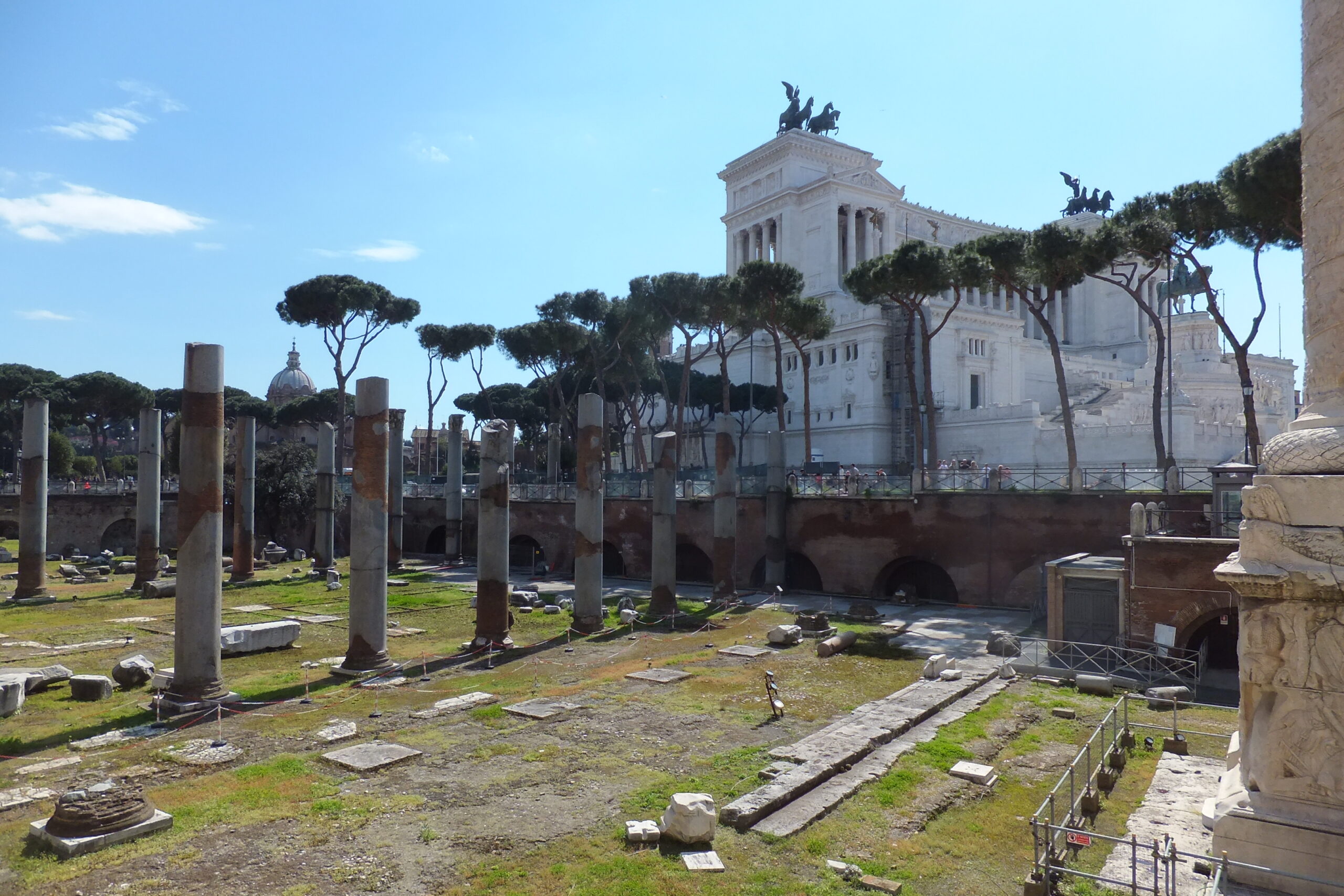
“In ancient times the Forum of Trajan was a large complex of open areas and buildings, a basilica (a rectangular building used as a hall of justice by the Romans and adopted by the earliest Christians as the type of building for their worship), two library buildings, the column of Trajan and the massive temple of Trajan.”

“Its [the Forum of Trajan’s] distinctive feature is the Column of Trajan which was erected in 114 AD. The statue of the Emperor Trajan was replaced by that of St. Peter while Sixtus V was Pope (1585-1590).”
The column consists of seventeen marble drums, with precise seams in between. It celebrates Trajan’s Dacian campaigns, and tales of battles – Trajan versus the Dacians – spiral upwards.
“Walking southwest along this street the sightseer will come to the Forum of Augustus … The forum was built by Emperor Augustus chiefly for enclosing a temple to Mars Ultor, and a massive wall was raised along the area to protect the temple from fire …
Adjoining the Forum of Augustus, but on the other side of the Via dell’Impero, is the older Forum of Caesar, or Julian Forum. This Forum was started by Julius Caesar (it was completed by Augustus) for the purpose of relieving the overcrowded Roman Forum.”
“Proceeding southwest along Via dell’Impero the sightseer will also see, on the west side of the street, the Basilica of Constantine.”
This basilica, the Basilica of Maxentius and Constantine, is part of the Roman Forum. Servicemen and sightseers around 1944 would have seen five marble and bronze maps installed by Mussolini on its wall. Four are historic maps, beginning with the birth of Rome and ending with the furthest extent of the Roman Empire under Emperor Trajan in the third century AD. The fifth map displayed Mussolini’s vision of a new empire, including Albania, Croatia, the Balkans, Corsica, Nice, Greece and Eastern Africa.
After the war, the fifth map was damaged and disappeared. It was rediscovered in the early 2000s and, since then, has been kept in storage.
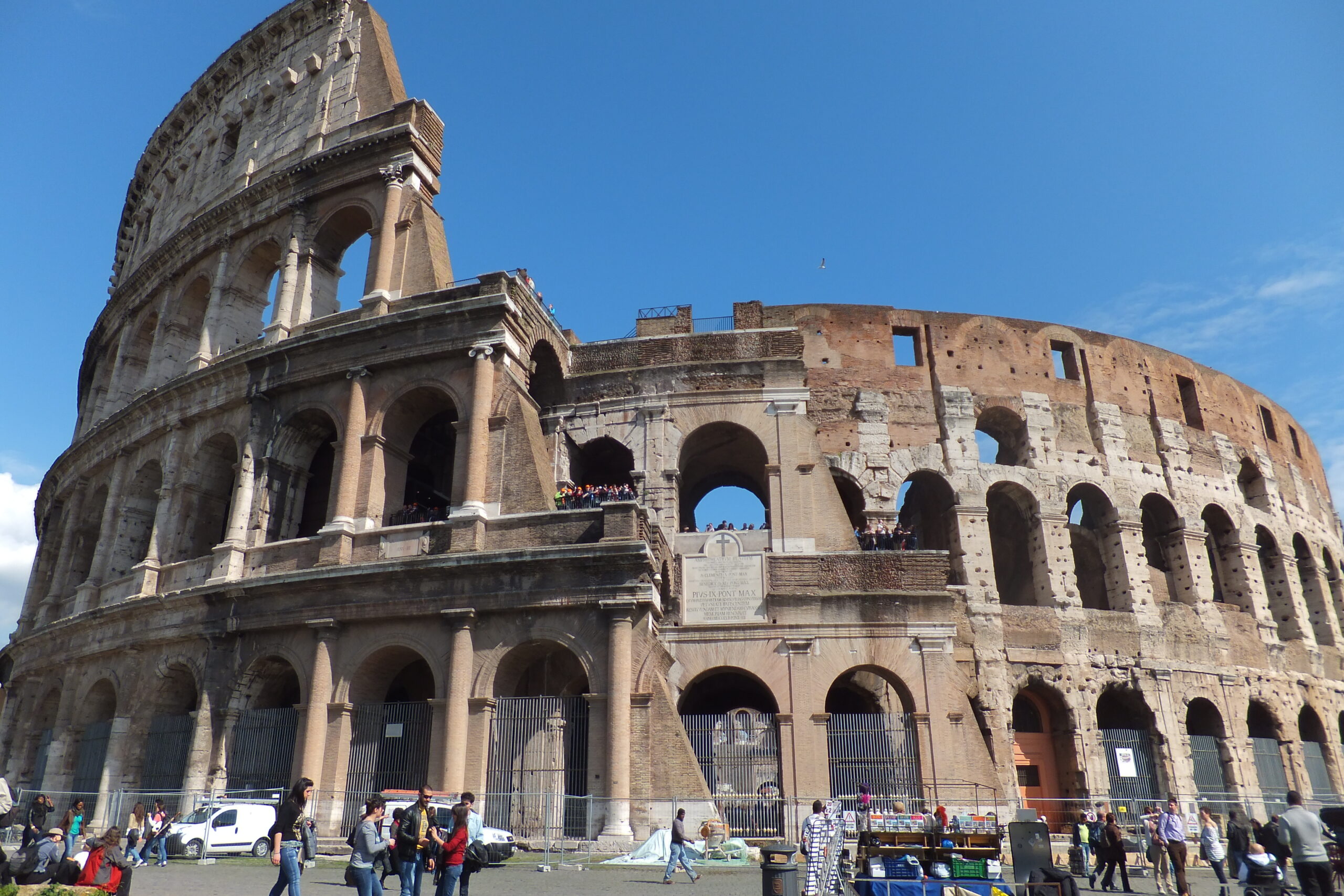
“A little further will bring him [the sightseer] to the Coliseum which was begun by the Emperor Vespasian in the year 72 AD and used for hunts, sham battles, gladiatorial shows and races.”
“It was even possible to flood the arena so that it could be used for mock naval battles. The seats were of marble and could hold more than 50,000 spectators, making it the largest structure of this kind ever built.”

“Close to the Coliseum is the Arch of Constantine, which was erected in 311 AD and is the best preserved and most elaborate of the Roman Triumphal Arches.”

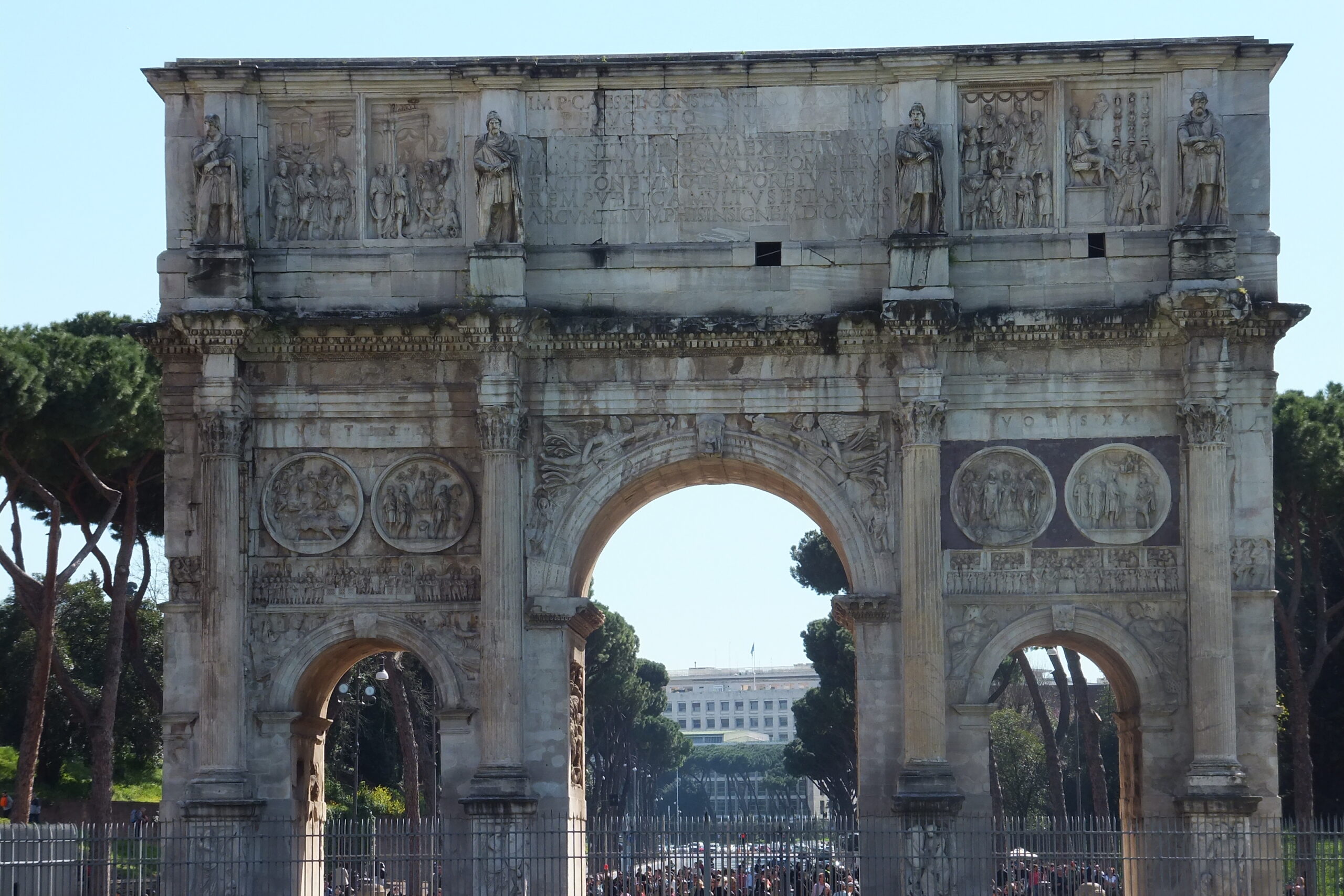
“To continue his circuit the sightseer should turn down the Via dei Trionfi [now Via di San Gregorio] and passing the Botanical Gardens on the east side of the street continue to the Circus Maximus (or Circo Massimo).”
When the guide refers to “Botanic Gardens”, it probably means the Parco del Celio (or Parco di S. Gregorio al Celio). Rome’s botanic gardens are on the west side of the river, just below the Gianicolo.
Turning the corner at the end of Via di San Gregorio, the road becomes the Via del Circo Massimo.
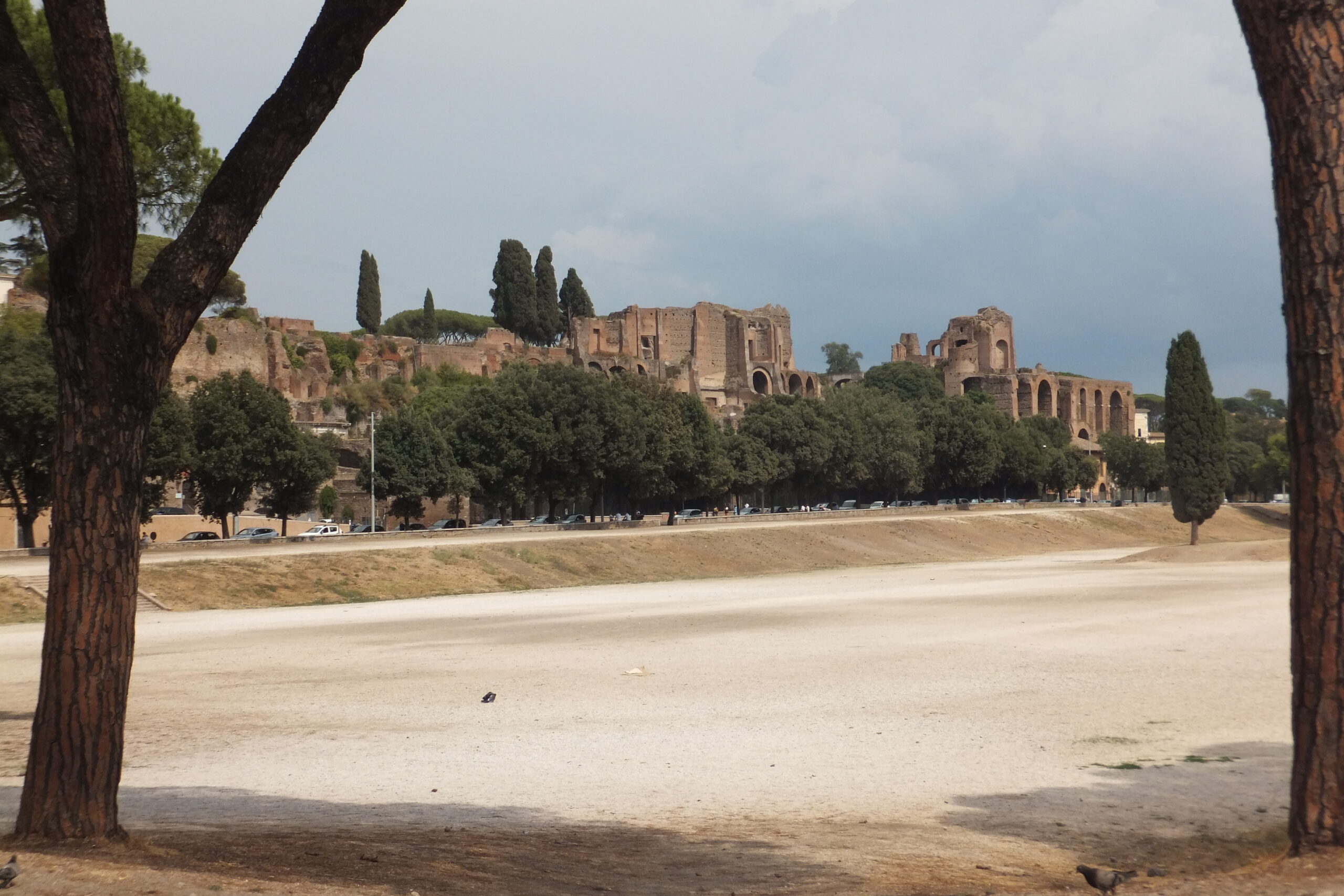
“In Roman times a Circus was a building for the exhibition of horse and chariot races and other amusements. The Circus Maximus is the oldest building of this kind in Rome, and indeed, races were held, on this site beside the altar of the god Consus even before the erection of any permanent structure.”
The Circo Massimo was used for two, three and four horse chariot races. The Roman Kings and Emperors improved and enlarged it.
“The first building is said to have been built by Tarquin the Younger, fifth of the legendary kings of Rome who reigned approximately 600 years before Christ. Stalls and chariots for the horses were built in 329 BC, and later the building was somewhat enlarged by Julius Caesar. In 31 BC the building was partially destroyed by fire but was completely restored by Augustus. After another fire it was rebuilt again by Domitian. The work was finished by Trajan, who was the Roman Emperor from 98 to 114 AD.”
Trajan increased the number of stands, enlarging the capacity to 300,000 places.
The few remains of the structure from Trajan’s time are at the south-eastern end.
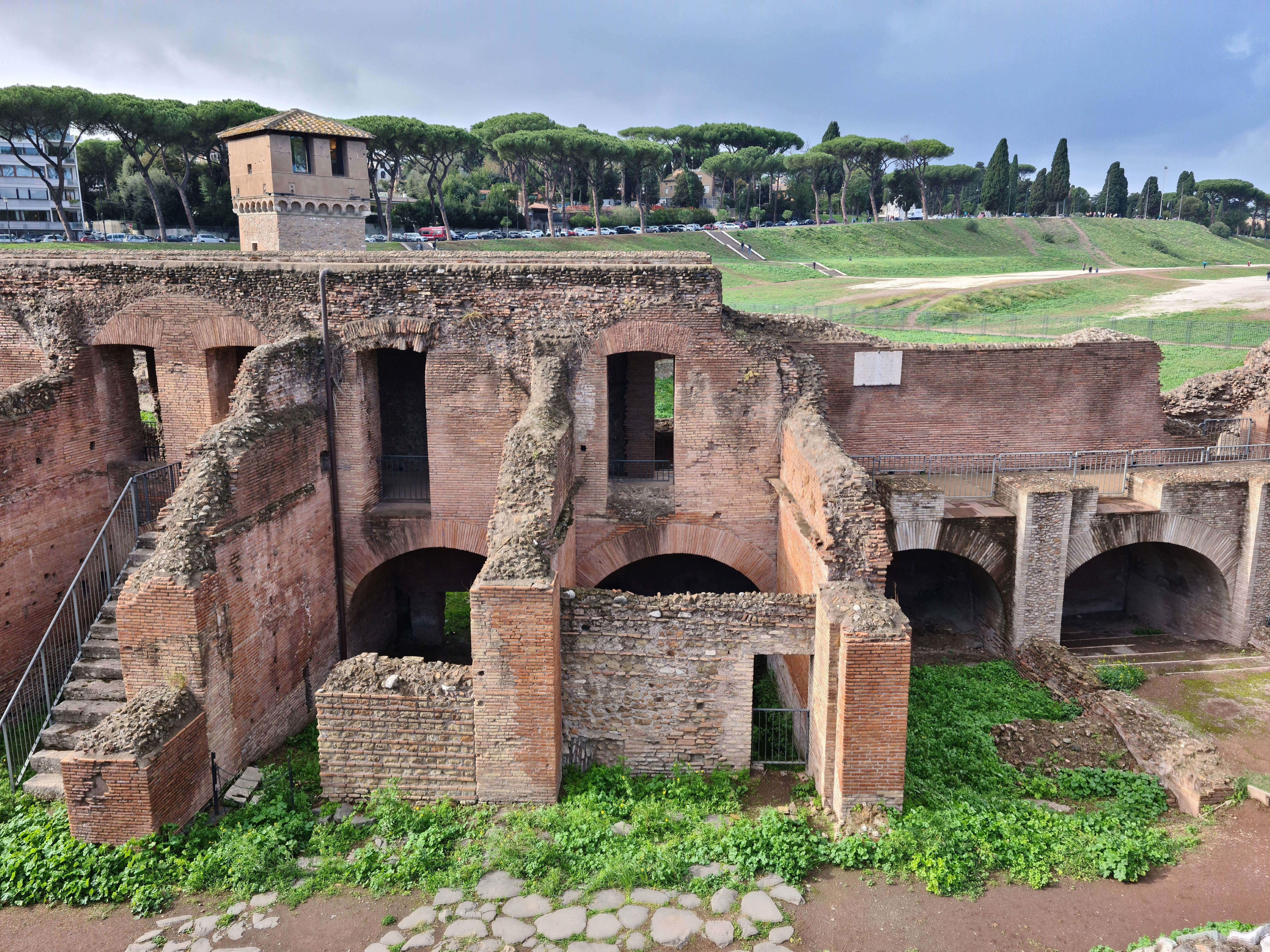
This area continues as an entertainment venue. Nicola Stame, one of the tenors featured in “The Two Tenors” article, performed here in 1939, singing the lead tenor role in the opera Tosca.
During 2023 Circo Massimo has hosted concerts, using temporary stands and seating. In autumn 2023 there have been equestrian displays and competitions, an echo of the Circo’s past!
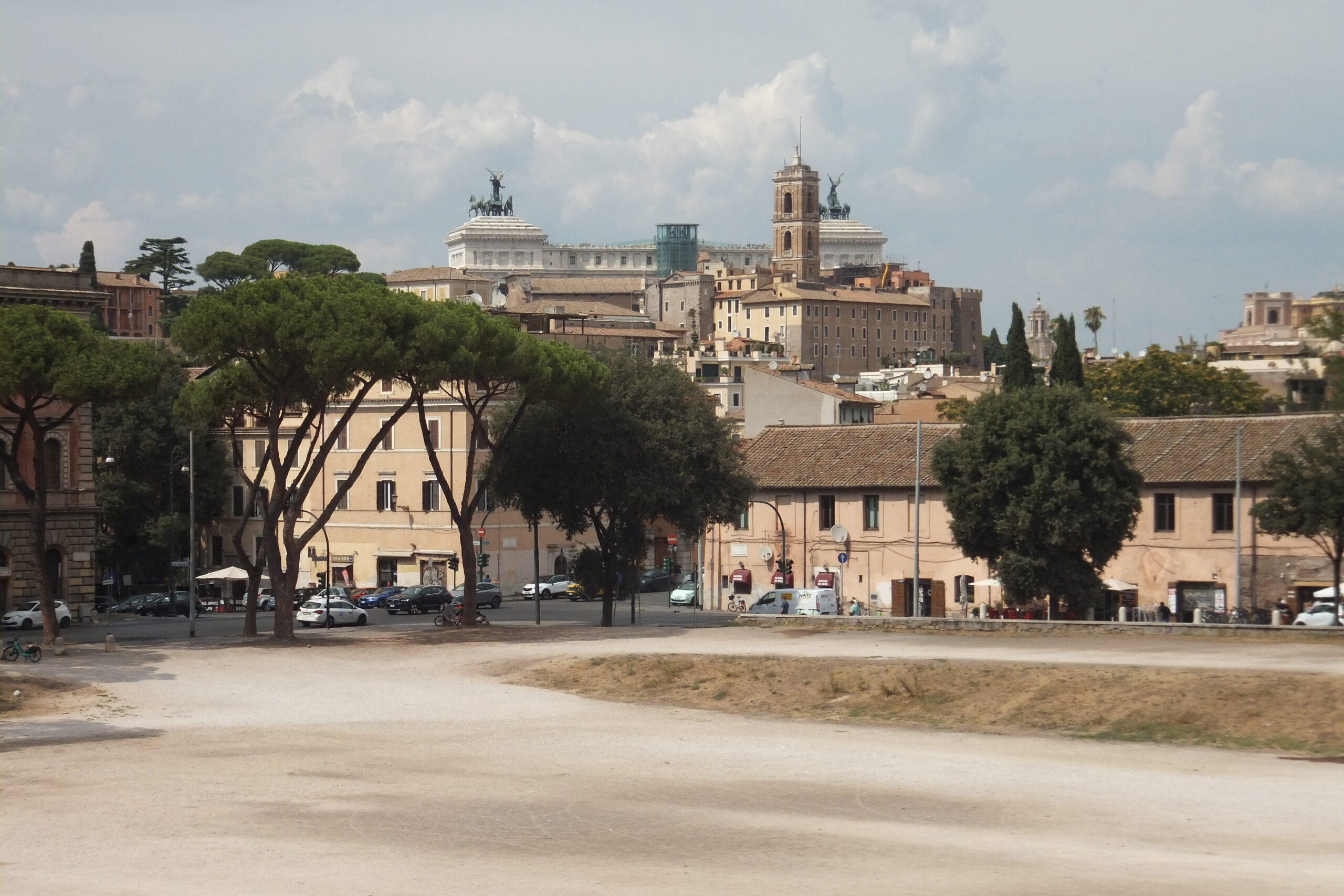
From the south-western side, which is uphill, it is possible to see the outline of the Vittoriano in the distance.
The itinerary is directing the reader back: “The sightseer should proceed up this street … until he reaches the Via del Mare.”
The Via del Circo Massimo briefly becomes Via della Greca and the Church of Santa Maria in Cosmedin is at the junction with the former Via del Mare.
Via del Mare, in 1944, is now Via S. Maria in Cosmedin, leading into Via Petroselli (named after Luigi Petroselli, a post-war mayor of Rome), then becoming Via del Teatro Marcello.
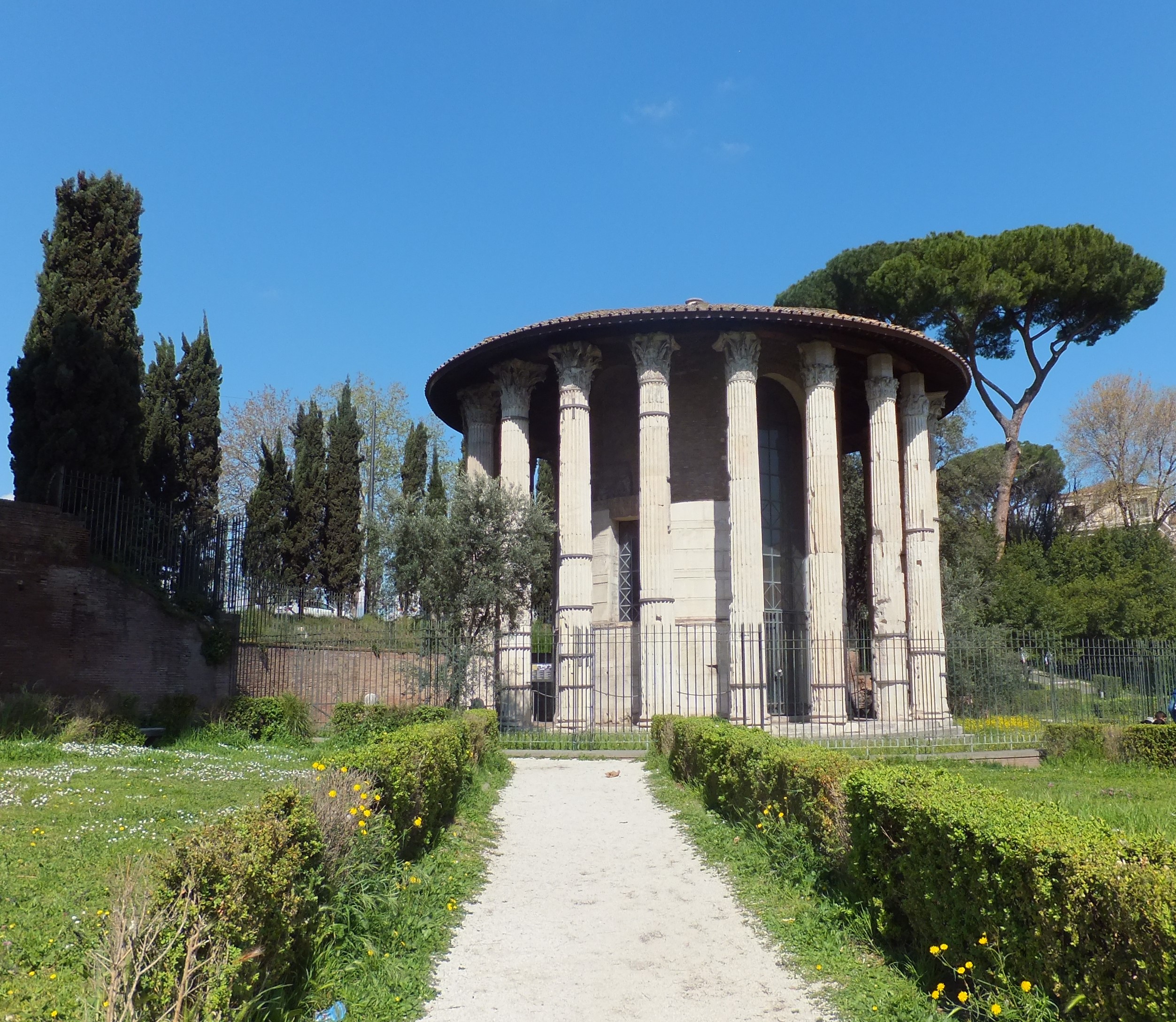
“Turning north on the Via del Mare, the sightseer will find on his left the Temple of Matuta (or round temple).”
Today, this temple is variously known as the Temple of Vesta and the Temple of Ercole Vincitore.
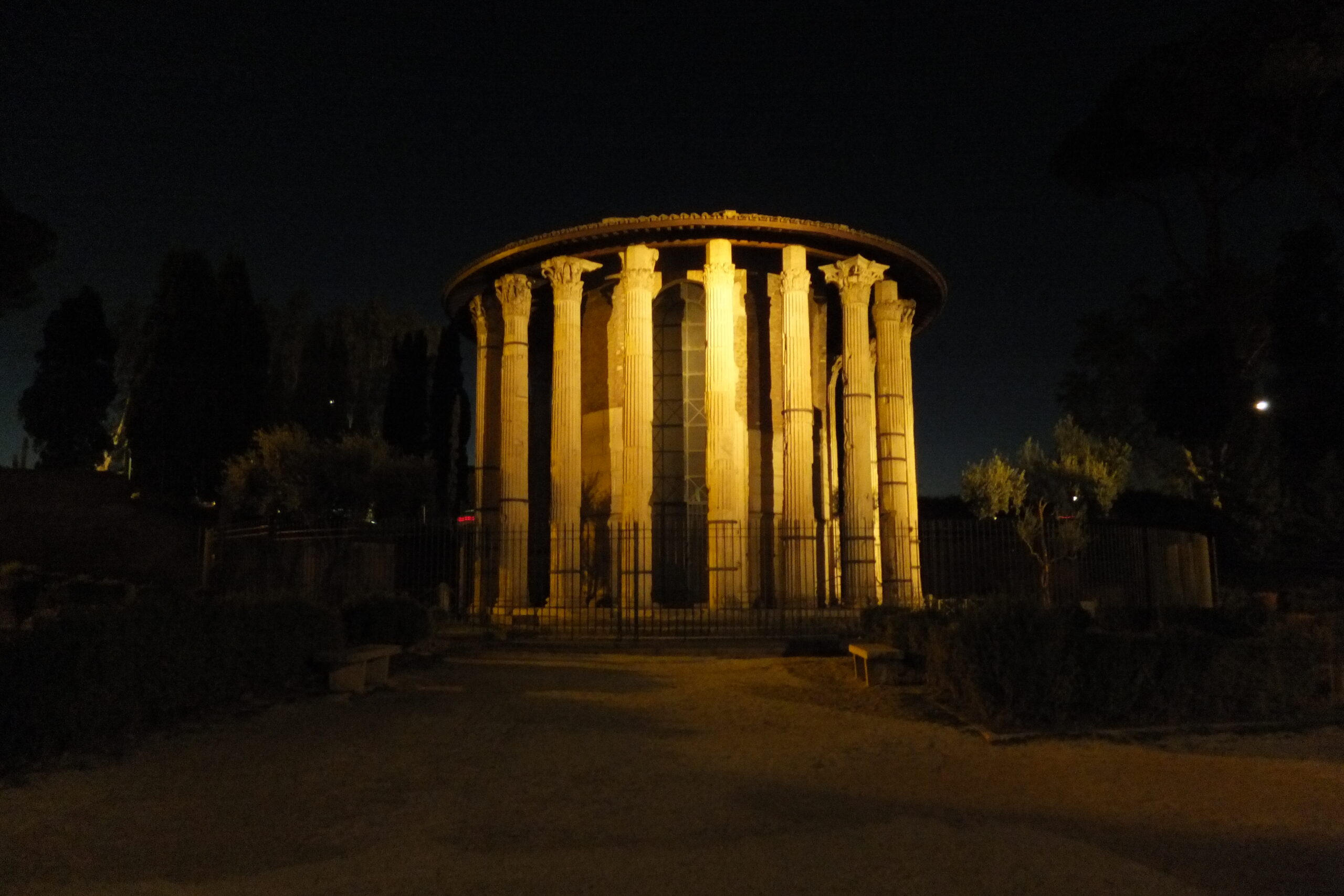
“To his east will be the remains of an archway known as the Janus, erected to the Roman god of doorways.”
The arch is now generally known as the Arco di Giano or Arch of Janus. Janus was also the Roman god of junctions, because he faced in two directions.
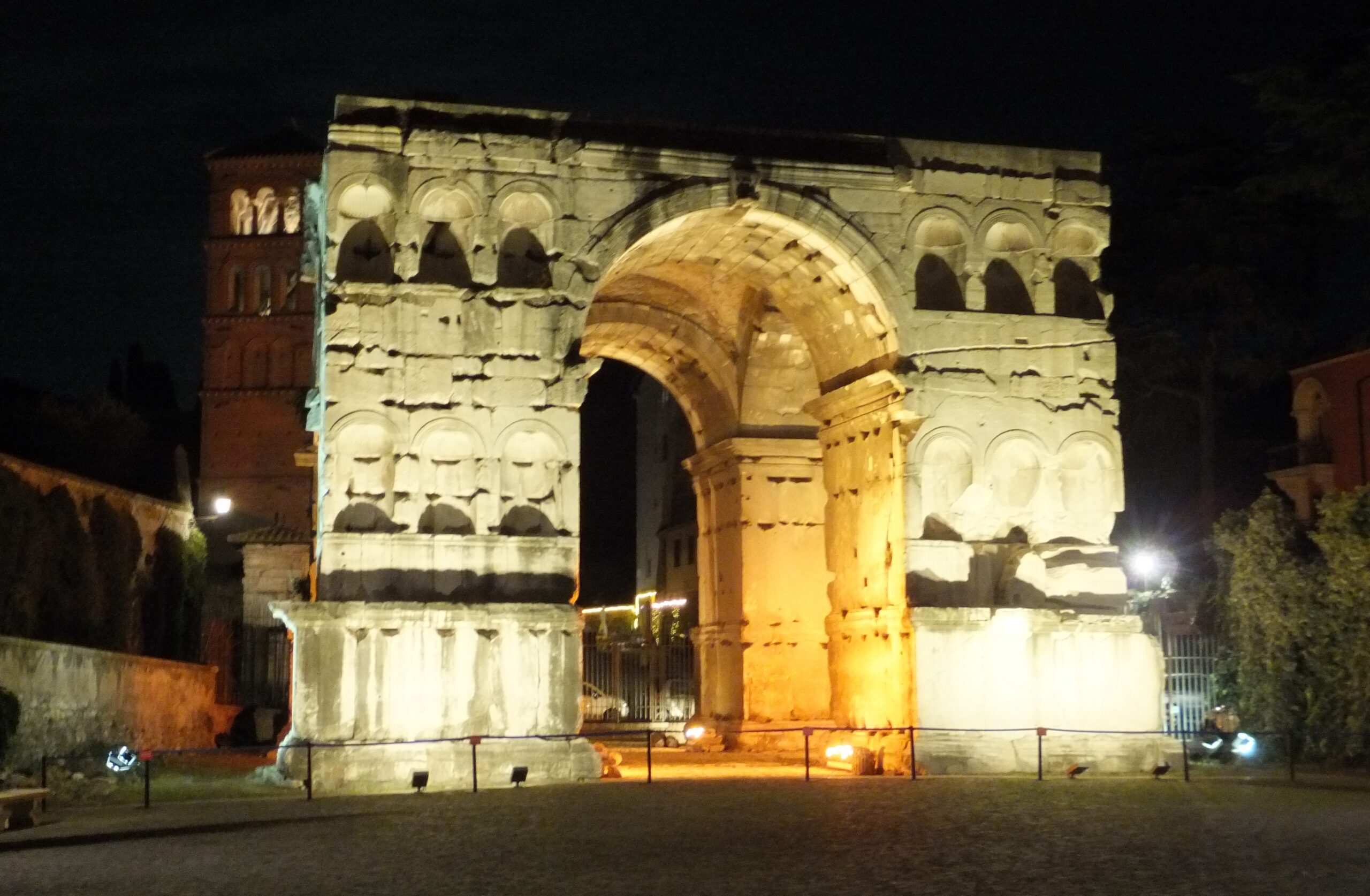
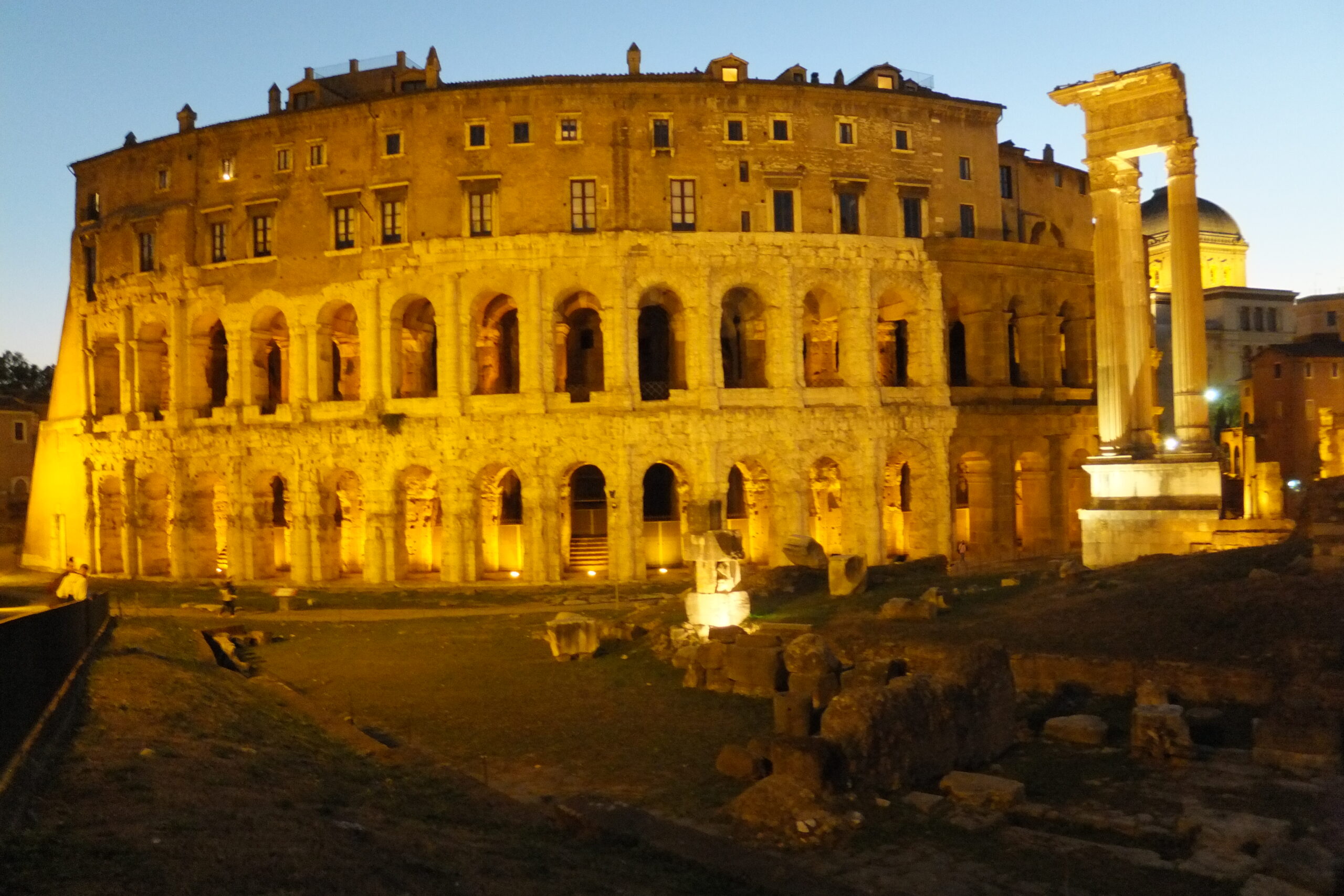
The Teatro di Marcello was constructed on the orders of the Emperor Augustus in honour of his nephew.
“The theater seated about 10,000 spectators and was first used in 17 BC when it was still incomplete.”
Perhaps because the works were incomplete, on the day of the theatre’s inauguration, Augustus’ official chair gave way beneath him and he fell backwards.
“A large part of the semicircular façade is still standing and the theater should be one of the most imposing ruins of ancient Rome when it has been cleared of its ugly shops and superstructure …”
The “superstructure” is part of Palazzo Orsini, an historic residence built on and over parts of Teatro Marcello. There is more information about it in the article “The Princess of Monte Savello”.
The shops were cleared long ago, as this recent photo shows.
The pathway in the photo leads around the theatre’s surviving façade to the Portico d’Ottavia, named after Augustus’ sister, the mother of Marcello.
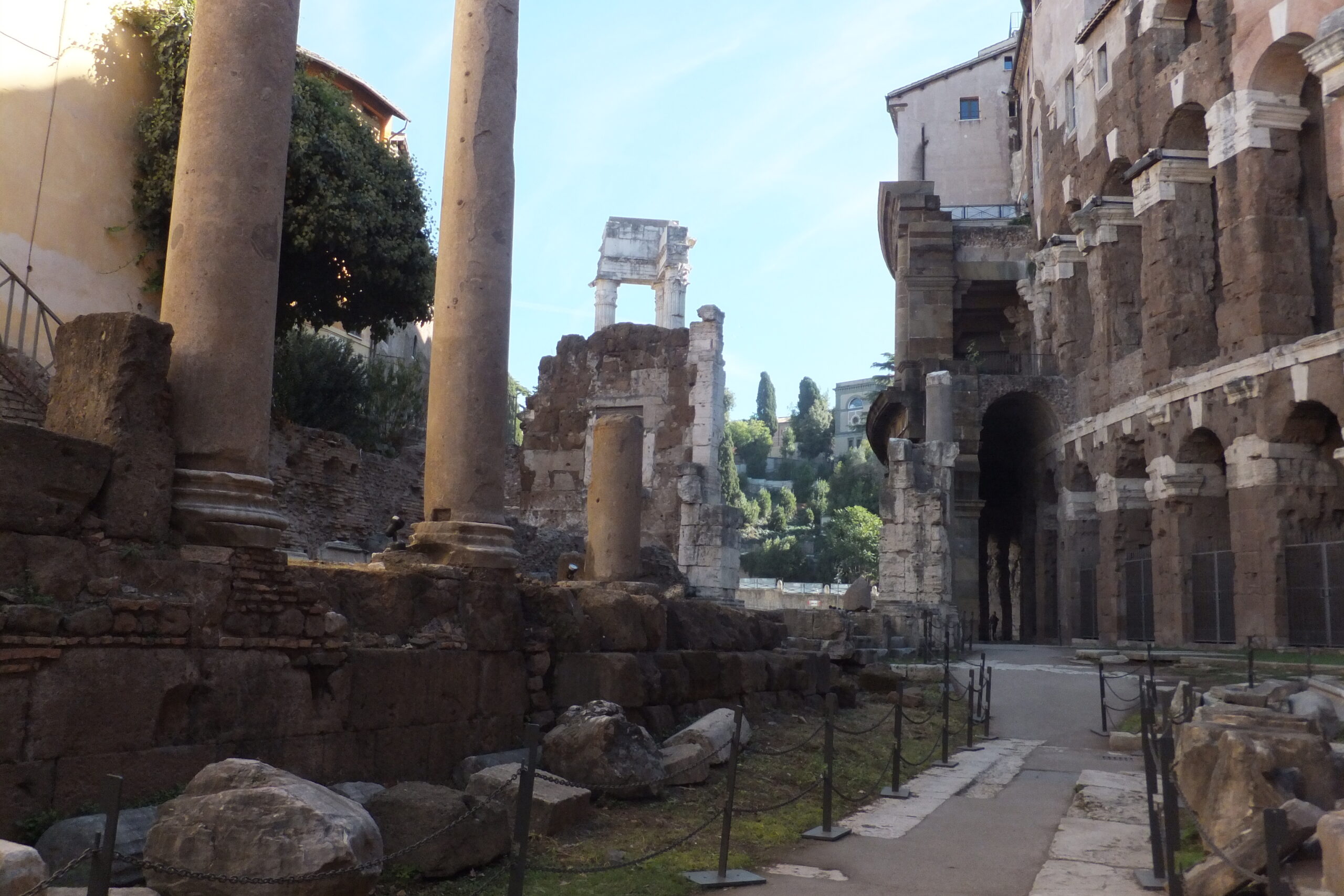
“The Victor Emmanuel Monument is about a third of a mile north-east of the Theater Marcellus on the Via del Mare, and the sightseer will have completed his circuit of the four avenues when he gets back to this point.”
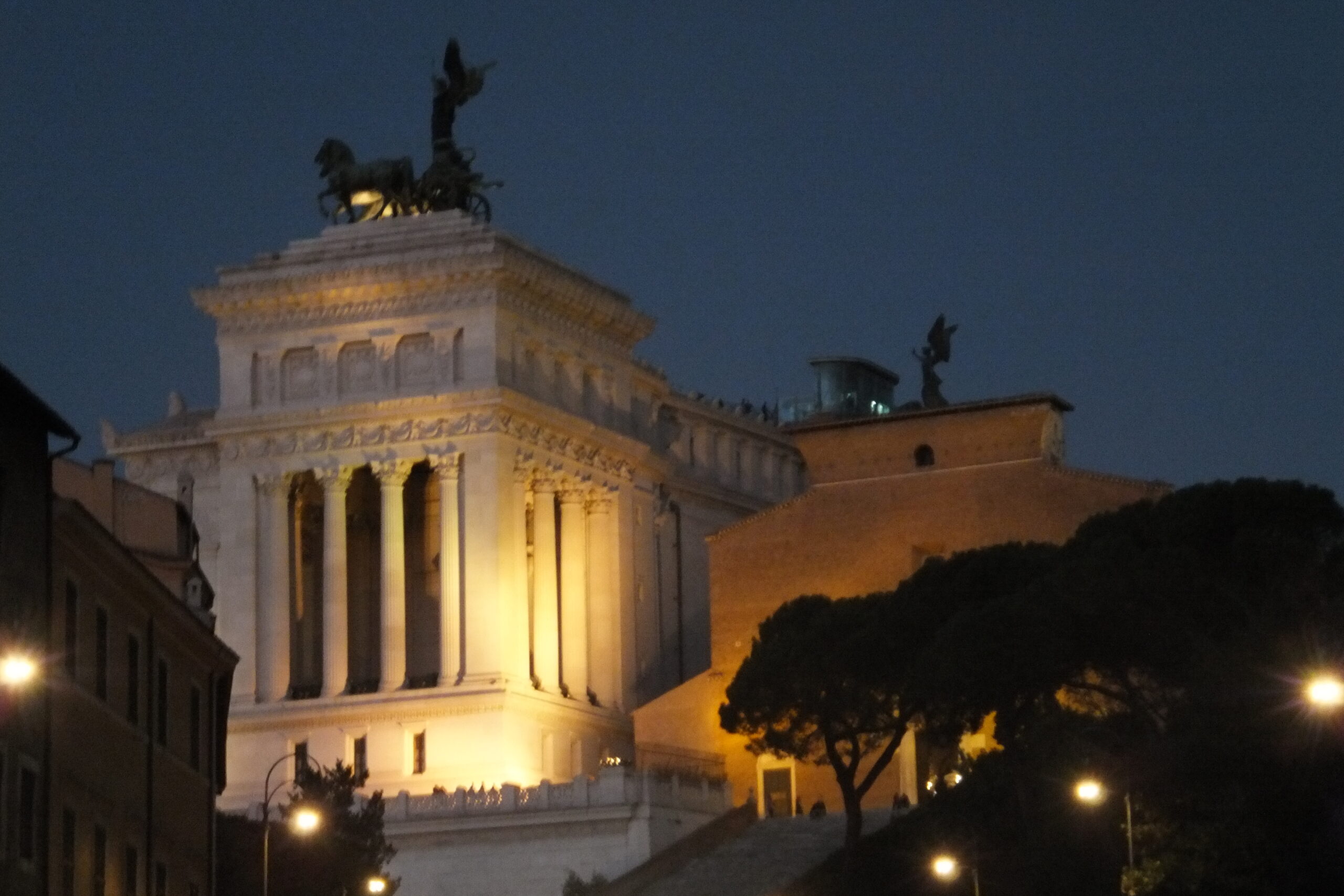
The US Guide, “A Soldier’s Guide to Rome”, is stored by Forces War Records and may be viewed digitally at: https://www.forces-war-records.co.uk.


